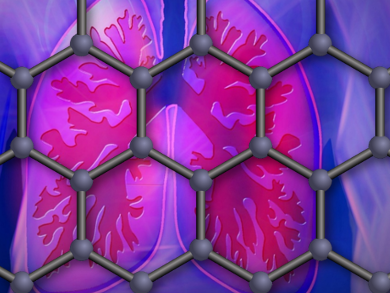Lung cancer is one of the most common and aggressive cancers. The lack of clinical symptoms of early-stage lung cancer often leads to late-stage diagnoses. Cheap, simple, or widely available screening methods for early diagnosis do not exist. Using electronic nose (e-nose) devices to detect specific lung-cancer biomarkers (CMs) in exhaled human breath is intensely investigated. Challenges of this technology include the decrease in sensor sensitivities in the presence of water vapor, sensor drift leading to the inability to calibrate exactly, relatively short sensor lifetimes, and difficulty discriminating between multiple diseases.
Evgeniya Kovalska and colleagues, University of Exter, UK, have developed a technique to create a highly sensitive graphene biosensor to detect ethanol, isopropanol, and acetone, the most common lung CMs, at the earliest possible stage, in a convenient and reusable way. The team compared two types of graphene, flat multi-layer graphene (f-MLG) and patterned multi-layer graphene (p-MLG). Both samples were synthesized under similar conditions in a chemical vapor deposition (CVD) system, using flat and preliminary structured nickel foil as a catalyst for f-MLG and p-MLG growth, correspondingly. The obtained graphene films were transferred to a flexible polyvinyl chloride film for further characterization and sensor fabrication. Sensing capabilities were determined by measuring the electrical response of the MLG electrodes with respect to exposed CMs solutions across a range of concentrations.
Both sensors can detect the appearance of specific CMs in real and short times and were specifically selective to acetone. The researchers expect greater sensitivity through optimization of the patterned structures used. According to the team, this could be the first step towards creating improved and cheaper e-nose devices for earliest possible lung-cancer diagnosis.
- Multi-layer graphene as a selective detector for future lung cancer biosensing platforms,
E. Kovalska, P. Lesongeur, B. T. Hogan, A. Baldycheva,
Nanoscale 2019.
http://dx.doi.org/10.1039/C8NR08405J



